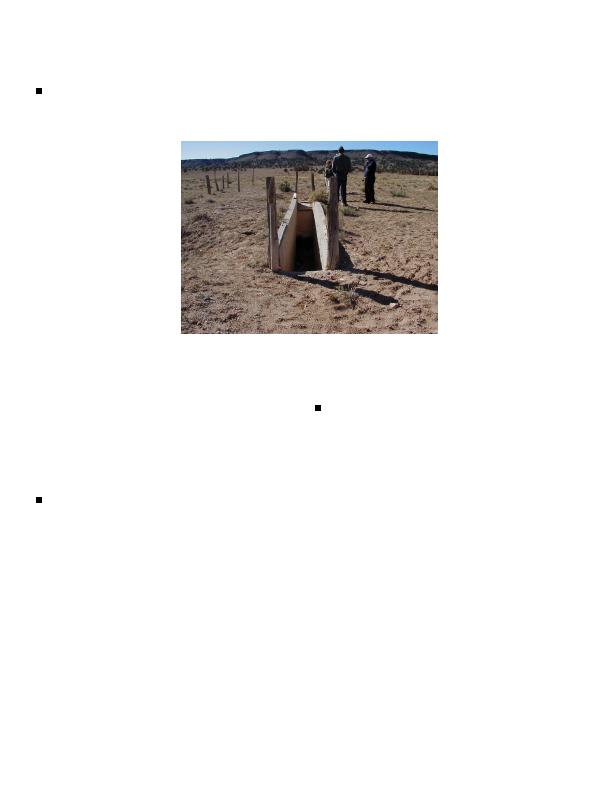
33 documented health consultations have been con-
pose a longer term threat to persons who were
ducted at 20 sites in New Mexico. Following are ex-
exposed. ATSDR again determined that once the
amples of health consultations conducted in the state:
fire was extinguished, the potential for immediate
hazard was eliminated. However, concerns were
Navajo Nation Sheep Dip Vat Health
expressed that the damage done to the soil by
Consultation--ATSDR has an interagency
heat and the loss of trees and plants covering the
agreement with the Bureau of Indian Affairs
ground might greatly
(BIA) to provide public
increase the danger of
health support for
future erosion by both
various issues. This
water and wind. Increased
includes support for
erosion in the area
public health issues
could uncover material
associated with the
buried for disposal. The
cleanup of toxaphene
increased erosion of the
contamination in soil
soil in the burned area
from former sheep
could also carry toxic
dipping vats in the
materials into the Rio
Navajo Nation. BIA
Grande River watershed.
asked ATSDR to
The state of New Mexico
evaluate approximately
and the Los Alamos
82 former dip vat sites
National Laboratory are
as well as associated
environmental data and ATSDR, BIA, and a Navajo Chapter official survey taking steps to address
erosion and the potential
to prioritize the sites,
for contaminants washing
which are in Arizona
into the Rio Grande River.
and New Mexico,
Fort Wingate Army Depot--In 1999, on behalf
based on the potential threat to public health.
ATSDR staff met with representatives for BIA
of BIA, the Army asked ATSDR to evaluate
and the Navajo Nation Department of Historic
Preservation and completed site visits to the
in former munitions storage igloos at the Fort
former dip vat locations to evaluate the potential
Wingate Army Depot. The Army also asked
for human exposures.
ATSDR to determine how the contamination
might affect future usage when the property is
Cerro Grande/Los Alamos National
transferred to the BIA for use by the Navajo
Laboratory Fire--During the fire in May and
nation and the pueblo of Zuni. The Army wanted
June of 2000, the U.S. Environmental Protection
to determine whether the levels of contamination
Agency (EPA) asked ATSDR to conduct a series
might be a human health hazard, and to obtain
of health consultations on potential health risks
recommendations about the storage of raw and
to people from the planned controlled-burn fire
packaged foods in the igloos.
that spread out of control. ATSDR concluded
that although polycyclic aromatic hydrocarbons
In September 2000, ATSDR determined that the
(PAHs), volatile organic compounds (VOCs),
particulate matter, and metals were present in the
pose a health hazard to an occasional visitor.
air in detectable amounts, they appeared to be
As a precaution, ATSDR recommended that
below levels of health concern.
children and women of childbearing age should
not enter the igloos unless it was necessary.
Subsequently, in December 2000, ATSDR was
ATSDR further recommended that the igloos
asked by the Los Alamos National Laboratory
not be used for housing unless more extensive
of the Department of Energy to determine
cleanup is performed. Additional use-specific
whether levels of radiologic and chemical
recommendations were issued by ATSDR to assist
in future use determinations.


 Previous Page
Previous Page
